
|
Invertebrate Weapons: Part 1: Protists
by Richard L. Howey, Wyoming, USA |
When we think of weaponry with regard to animals, it is generally vertebrates that come to mind–teeth, claws, fangs, venoms, horns, hooves, and beaks. We humans, however, must largely rely on our ability to fashion weapons using our brains and the materials around us; clubs, spears, bows and arrows, catapults, swords, guns, and bombs. Trying to take down an antelope using just our bare hands and teeth–I don’t think so. My dentures just aren’t up to the task.
However, on a moment’s reflection, we can come up with some invertebrates that do have weaponry that concern us. If one swims in the ocean, the jellyfish tentacles are items to be considered, the “arrows” of cone shells, the beak of the octopus, the venomous spines of sea urchins as well. However, tiny creatures such as protozoa–Pah! No way! Well, as it turns out, they have a fascinating array of weaponry, generally not threatening to us, but quite effective in their niches. The ones that could threaten us do so not so much in terms of weaponry, but as parasites that can cause us extreme discomfort and in some cases can prove fatal.
The weaponry of these tiny critters can be defensive or aggressive in food gathering. There are some, the extraordinary complexity of which, had only been discovered relatively recently with the advent of high-tech analytical and microscopical techniques. However, in this discussion, we will limit ourselves to those which are relatively easy to observe and leave the explanations of the morphological and biochemical aspects for you to explore on your own on the Internet (or, if you’re old-fashioned, a library). However, be advised, it is important how you set up your searches. If you try “amoeba weaponry”, you get a series of pieces on air rifles!
A consideration to keep in mind is that the various micro-weapons depend upon some biochemical and biophysical sensors which are quite amazing. I would guess that we would not ordinarily think of amoeboid pseudopodia as weapons but, if you observe a variety of species carefully and long enough, you will discover that pseudopodia can undergo a distinct acceleration when the sensors detect a potential prey. The amoeba’s membrane may have an adhesive property that assists in “holding” the prey while it is being engulfed. Some have suggested that, in certain species, there may also be a kind of toxic substance that paralyzes the prey organism.
There are some flagellates that seem able to entangle prey and then pull them in for a tasty snack. Some dinoflagellates are known to exhibit toxicity and that’s why humans are warned not to eat shellfish and certain other sea creatures during periods of dinoflagellate “blooms”.
However, the clearest and, in some ways, most interesting examples of protozoan weaponry are to be found in the ciliates. One of the oddest might be the trichocysts of paramecia. In some ways, they seem ineffective and yet that may well be a misinterpretation. When a microscopist wishes to examine these structures, it usually involves some chemical or mechanical means to get them to discharge. Such a process causes distortion in the organism and usually its demise. If a stain is used then these “weapons” show up quite clearly and often in such density as to form a “cloud” which can extend a considerable distance beyond the Paramecium. Iodine, Tannic acid, Methyl Green Acetic, among others are commonly used to effect such an “explosive” discharge.
I will show you three examples. The first image shows the discharge largely centered around the “front” end of the organism.

The second image gives a view which shows that the trichocysts are distributed all around the organism and we need to remember that this is also true of the “top” and “bottom”; in other words, these are housed in tiny “silos” throughout the entire surface of the Paramecium.

The third image clearly demonstrates the force with which these structures can be distributed.

Many have been tempted to say that trichocysts don’t work as weapons, because they kill the Paramecium. However, that is not quite justified, in that, it seems that, in some cases, they serve to entangle an attacker allowing the Paramecium to flee. Protozoa are capable of extraordinary regeneration, so it is likely that such structures can be replaced. Another possible aspect is that a thick cloud of trichocysts around the Paramecium could act as camouflage. Whether or not they have a sticky character or perhaps even some toxicity is, to my knowledge, not known.
A much clearer case is to be found in the toxicysts in Dileptus, sometimes described as the “Elephant ciliate”. It has a long extension above the mouth area which it can sweep back and forth creating tiny currents to wave small potential prey toward the mouth. In that area is a “battery” of tiny organelles called toxicysts which are both like miniature spears and possess a paralyzing toxin.
I’ll show you a view of a Dileptus with white background and then with a black background from using the Invert function.
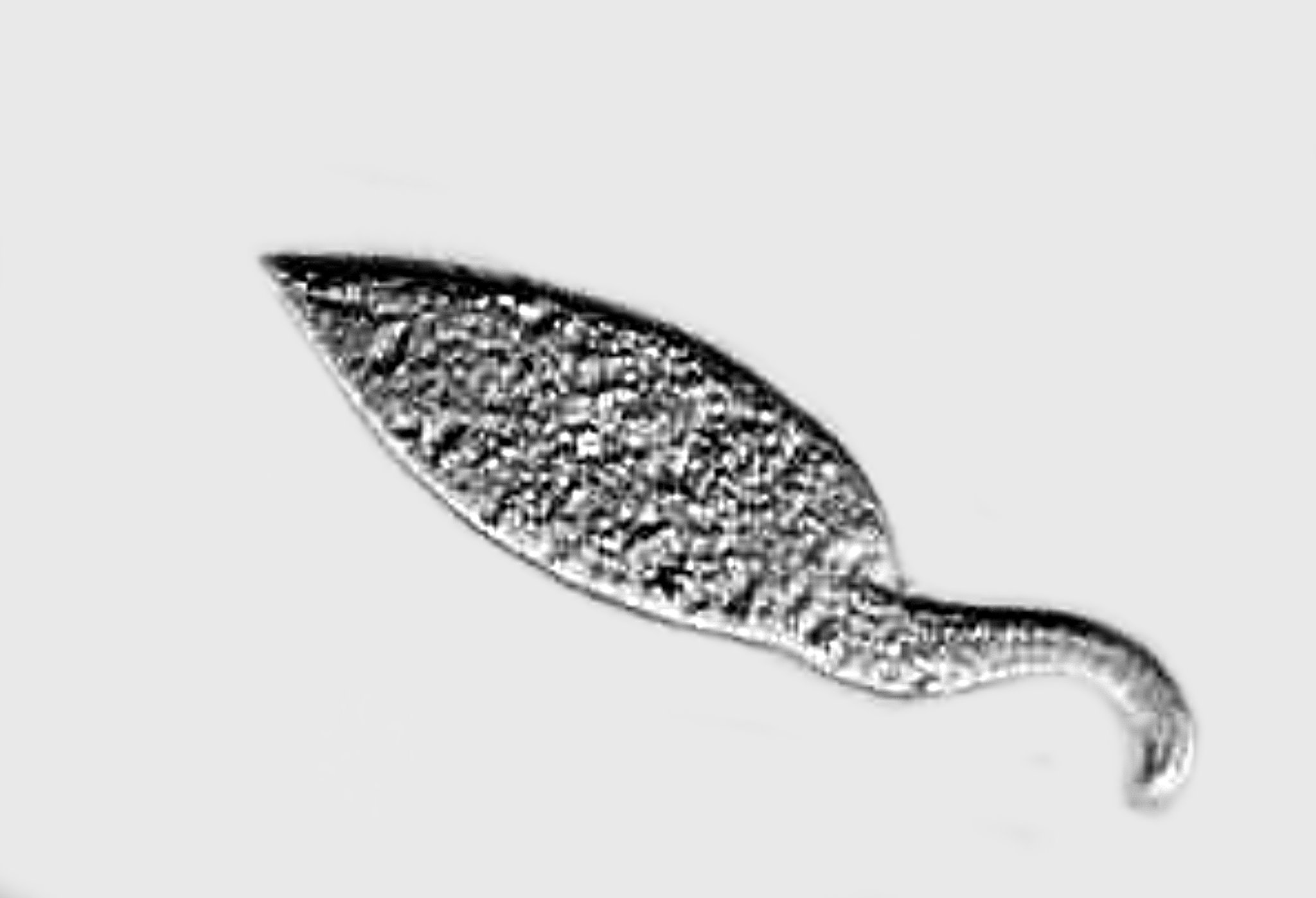
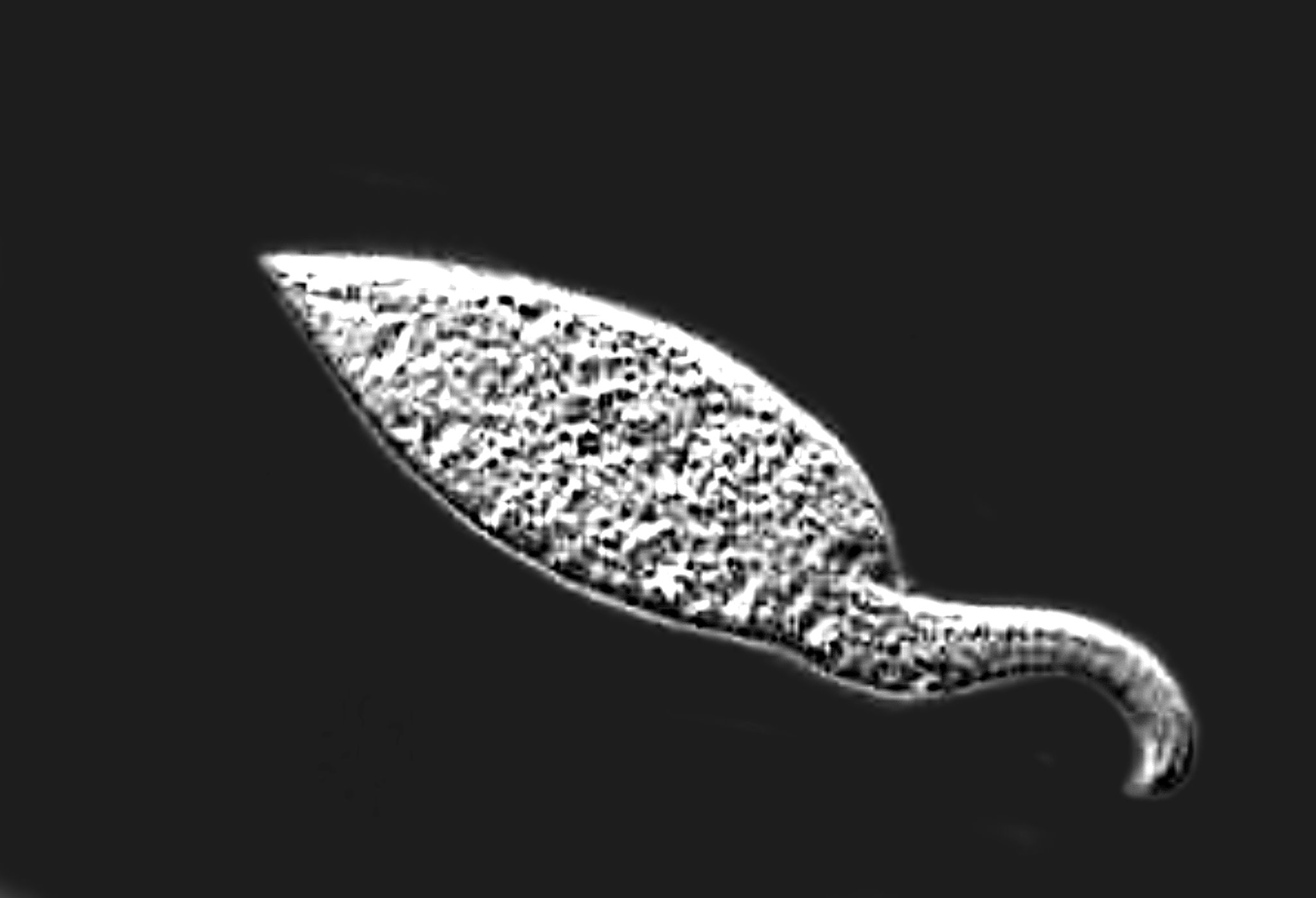
A group of some of the most bizarre ciliates are the Suctorians. In their larval stage, when they are called swarmers, they possess cilia, but when they mature they become sessile, they attach to a surface or an aquatic animal and shed their cilia. They develop tentacles which have specialized structures that allow them to capture and ensnare their prey. These extend and attach and are toxic to the prey whose protoplasm is then sucked into the Suctorian’s body through the tentacle for digestion. I’ll show you 2 images of a Suctorian feeding and both cases demonstrate how voracious these critters are. They are going after 2 prey organisms at once.
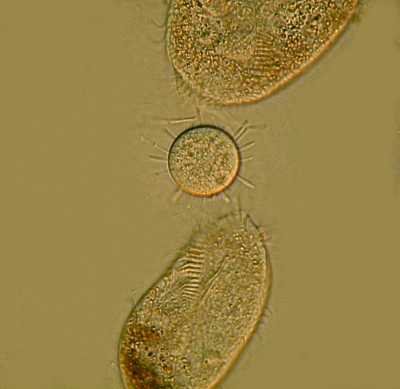
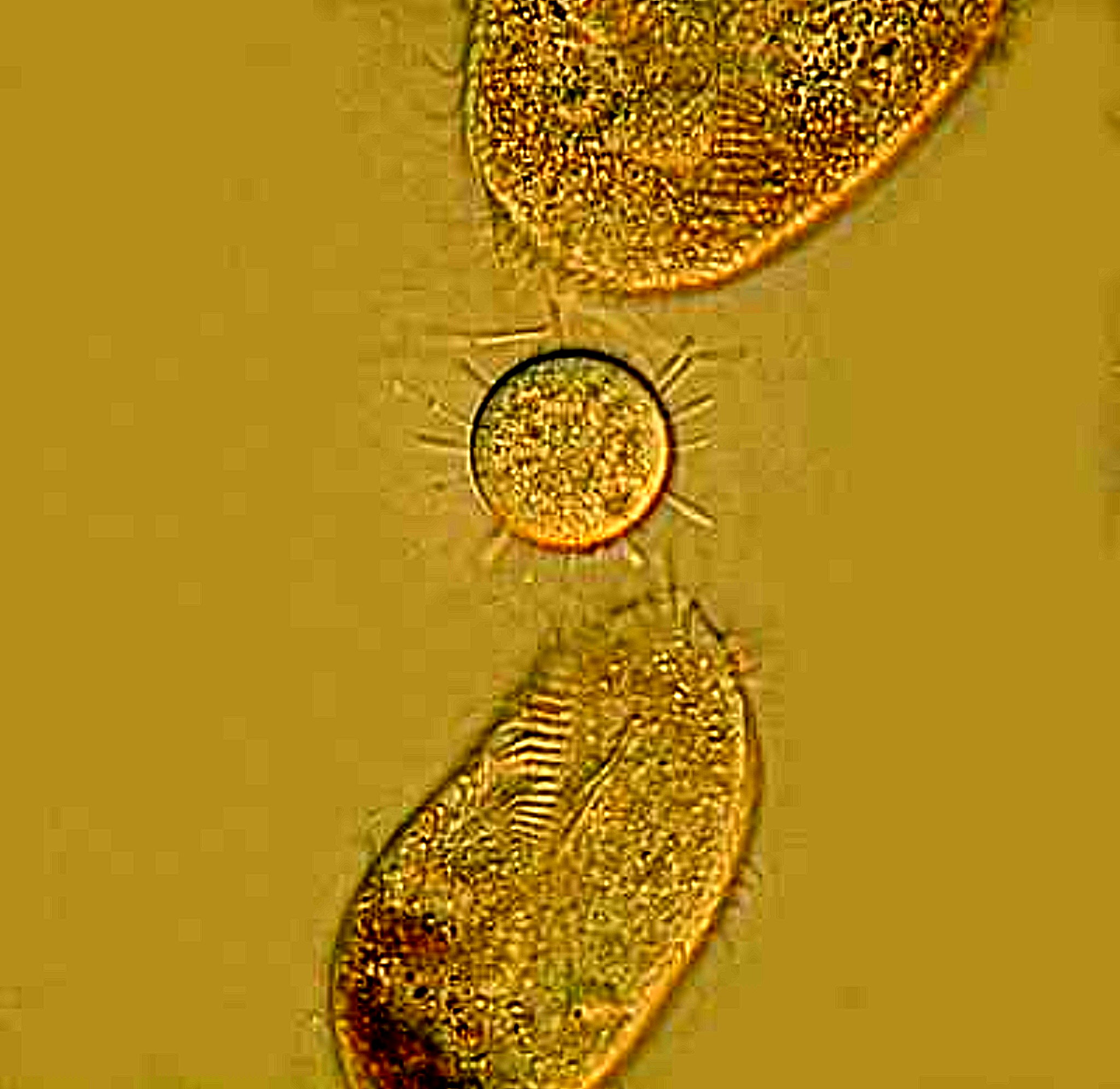
Another extraordinarily aggressive ciliate is Lacrymaria. My friend, Mike Shapell and I, spent somewhat over a year experimenting to find a protocol for culturing this fascinating creature. Lacrymaria is capable of unbelievable feats with its “neck” both in terms of the length of extension and flexibility. I will show you one early image which I took and then another from the Internet showing the extensility. Also, I will provide a link to a video clip which demonstrates its remarkable behavior. Lacrymaria is a voracious feeder and while blindly thrashing about, if it comes in contact with an organism much larger than it can ingest, it will simply use the rod (trichites) in the oral mechanism to expand the mouth open and bite off a substantial chunk. I have seen it do this with Blepharisma. It appears that the oral area may also be armed with some kind of toxin or irritant. When we were trying to create a protocol, many of our cultures had large numbers of gastrotrichs of a species which was spiny and well-plated protectively, yet when the Lacrymaria would bump into a gastrotrich, both would quickly withdraw from such contact. Here is an image and below that the link to a video.
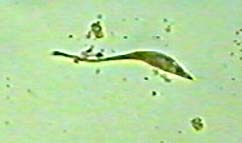
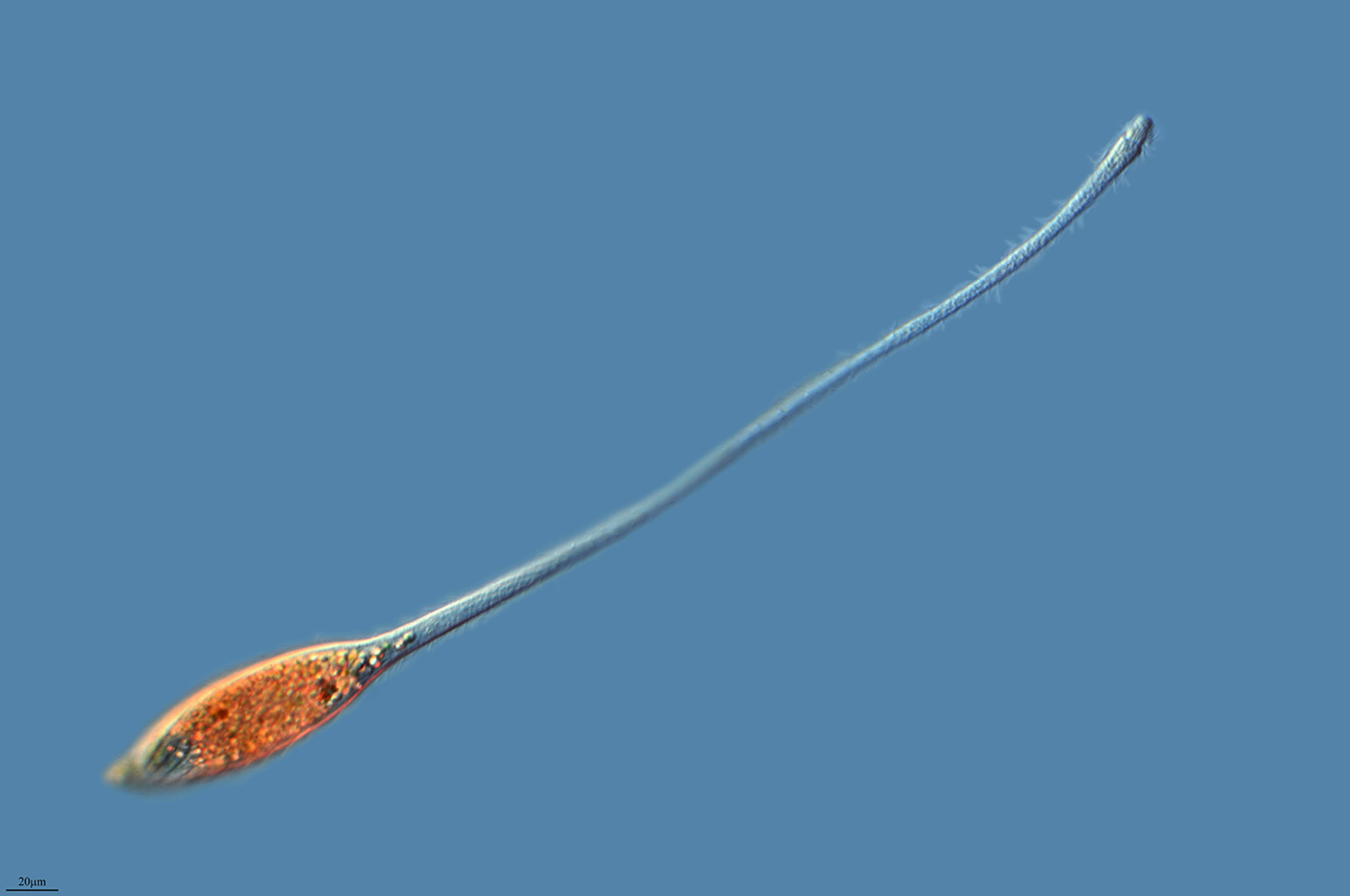
Next up is one of the most bizarre denizens in the micro-zoo of protozoa, Didinium. Perhaps the most comprehensive study of the organism was published in 1909 by S.O. Mast. Mast carefully examines earlier discussions of the weaponry of Didinium and raises important critical issues. He himself carried out extensive and highly detailed experiments and compares his results with these earlier accounts. Much has been made of the strange oral structure that is used to engulf prey and it has been variously described as a kind of “scoop” or more recently as a proboscis. It is especially intriguing in that it appears only when the Didinium is about to attack a prey organism. It can extend and expand. It has been conjectured that it is also capable of shooting trichocysts or releasing a kind of toxin that paralyzed the prey. Didinium very often selects Paramecium at the top of its menu. Mast quite reasonably argues that the trichocysts come from the Paramecium and not the Didinium and that no toxicysts have been observed. However, it is not quite so clear as that. More recent studies have again reported trichocysts attributed to Didinium and toxic reactions by the prey organism. I will leave all of this to be sorted out by someone with more energy, time, and patience than I have. It would make a wonderful research project for someone and, incidentally, Didinium is rather easy to culture. So, get to it.
In the meantime, I show you some pictures and drawings. First, two images which I took of a prepared, stained slide showing Didinium; the second is monochrome and shows a bit more detail of the proboscis poised in the “nose cone”.
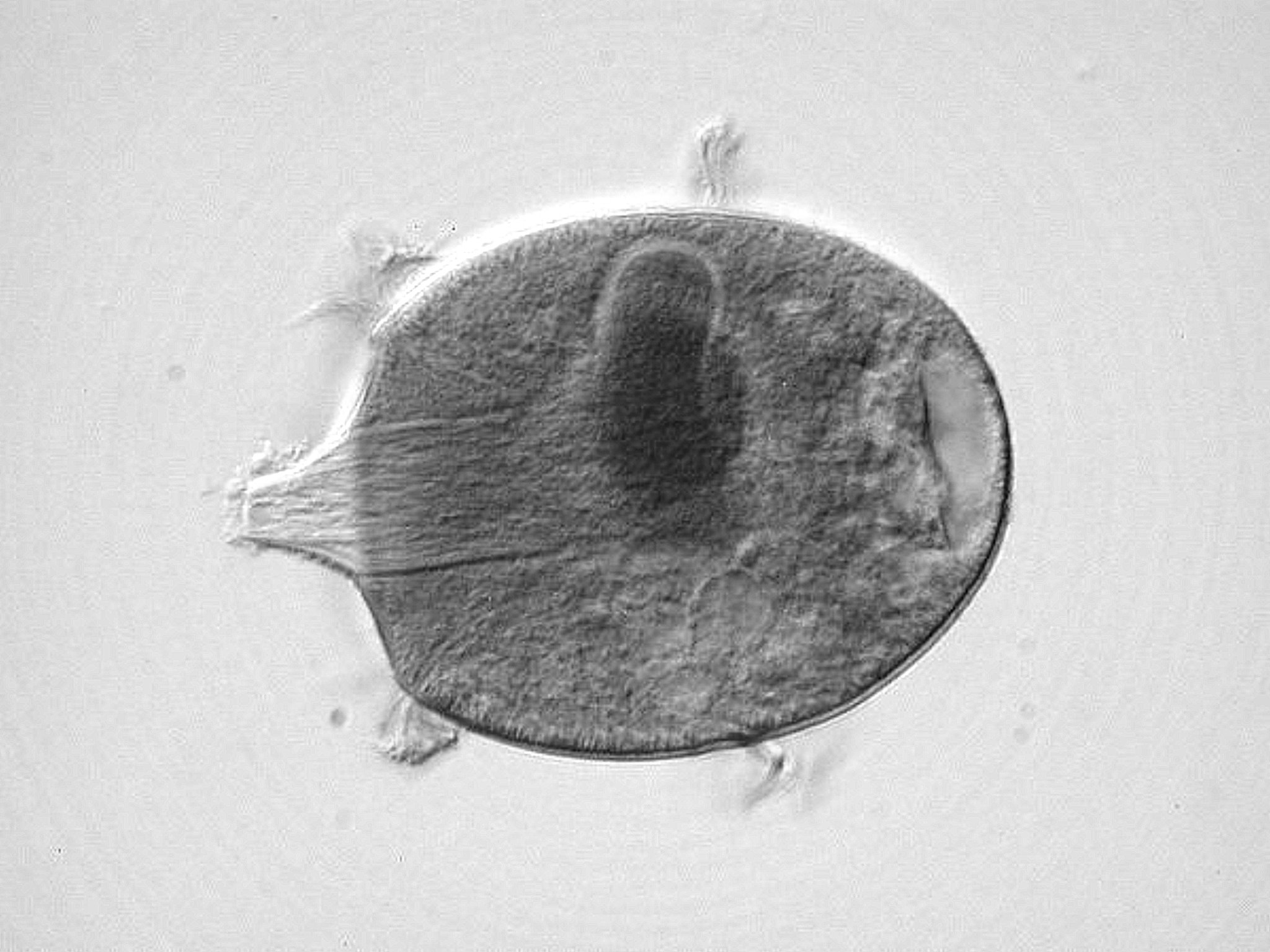
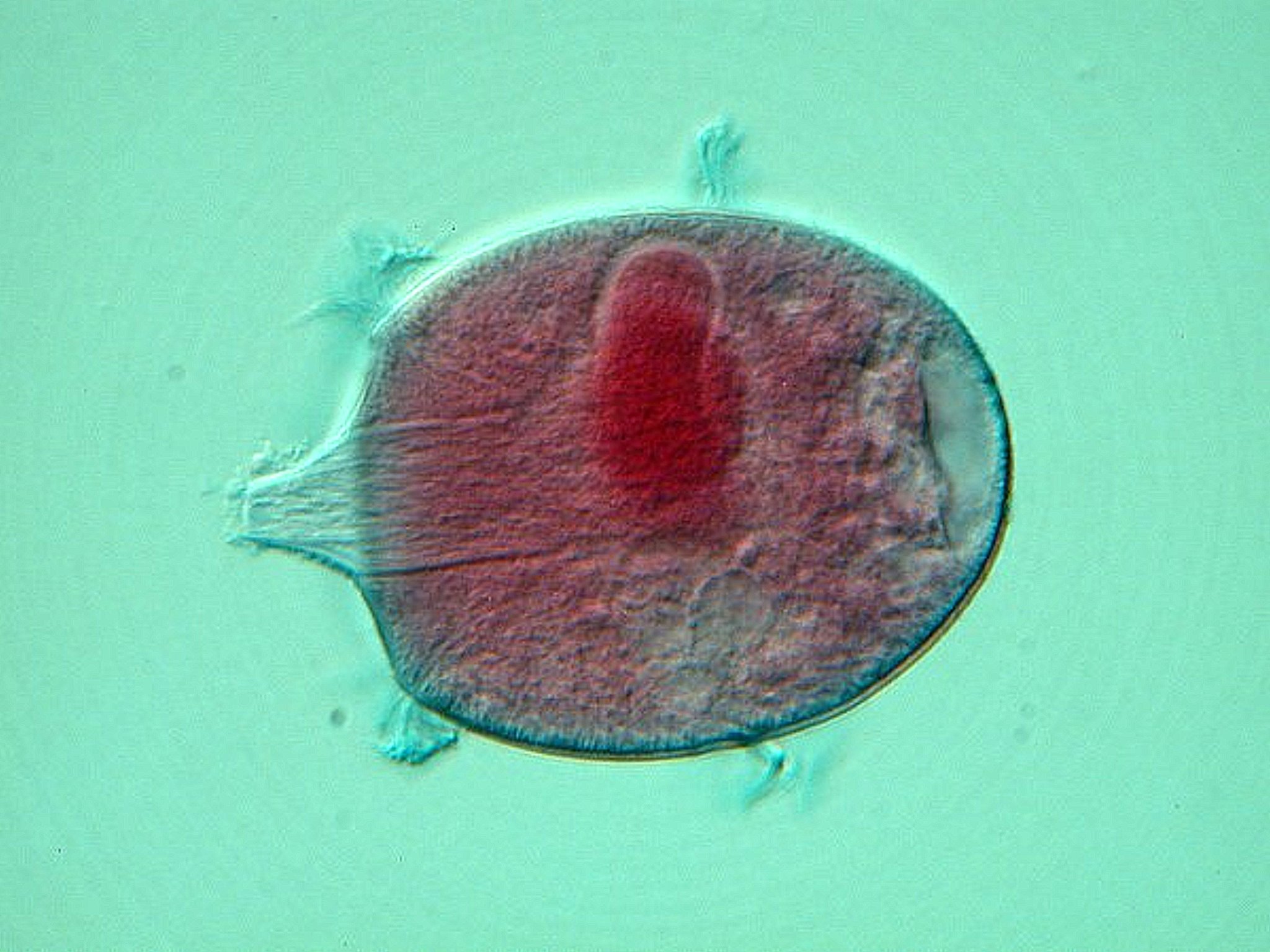
Next, Didinium attacking a Paramecium along its side; the second image is monochrome.
.jpg)
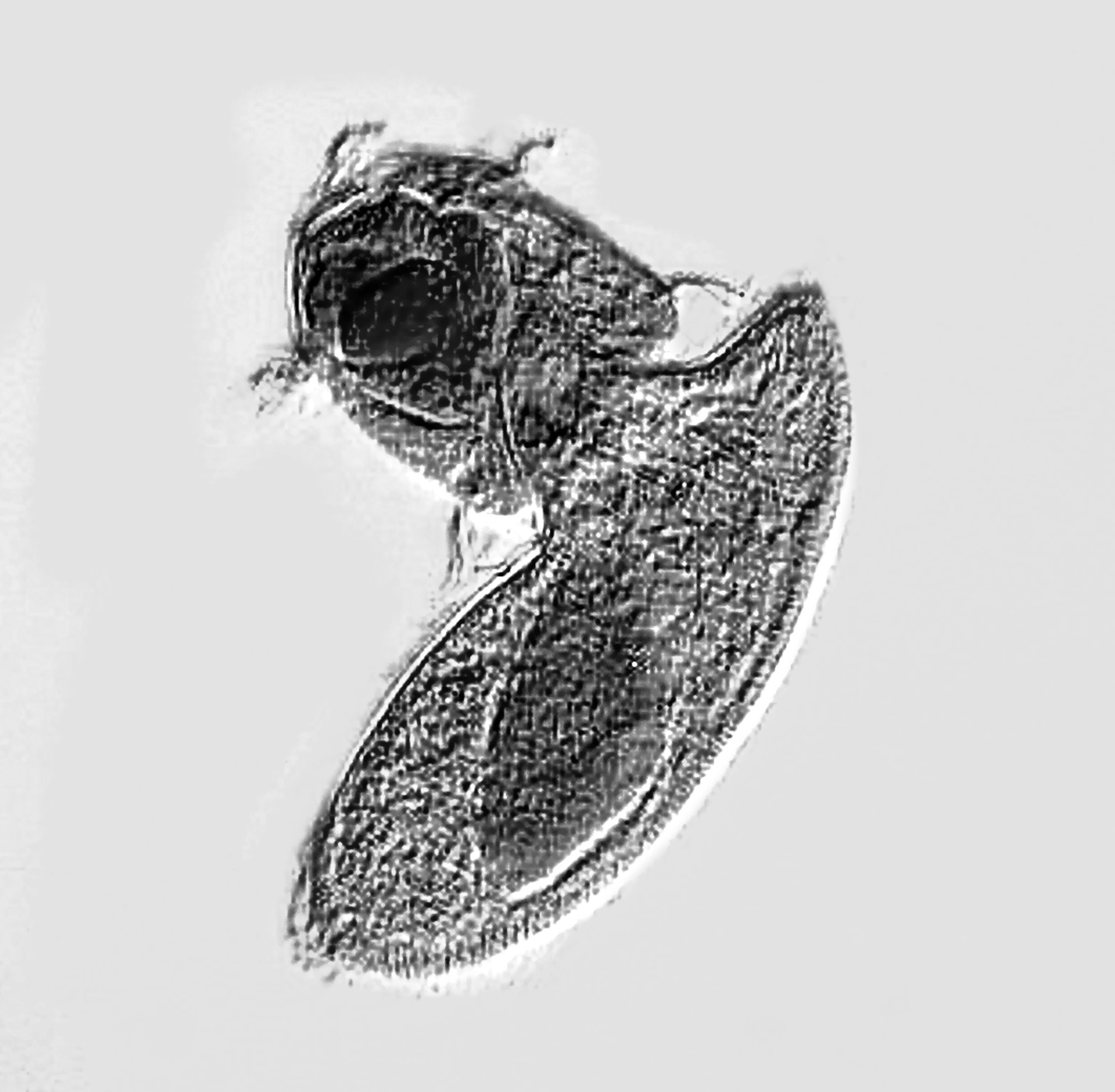
Now we see Didinium ingesting a Paramecium and half swallowing it; the second image is monochrome.
As a brief update, current studies have shown that there are indeed toxicysts in Didinium of at least two different sorts.
.jpg)
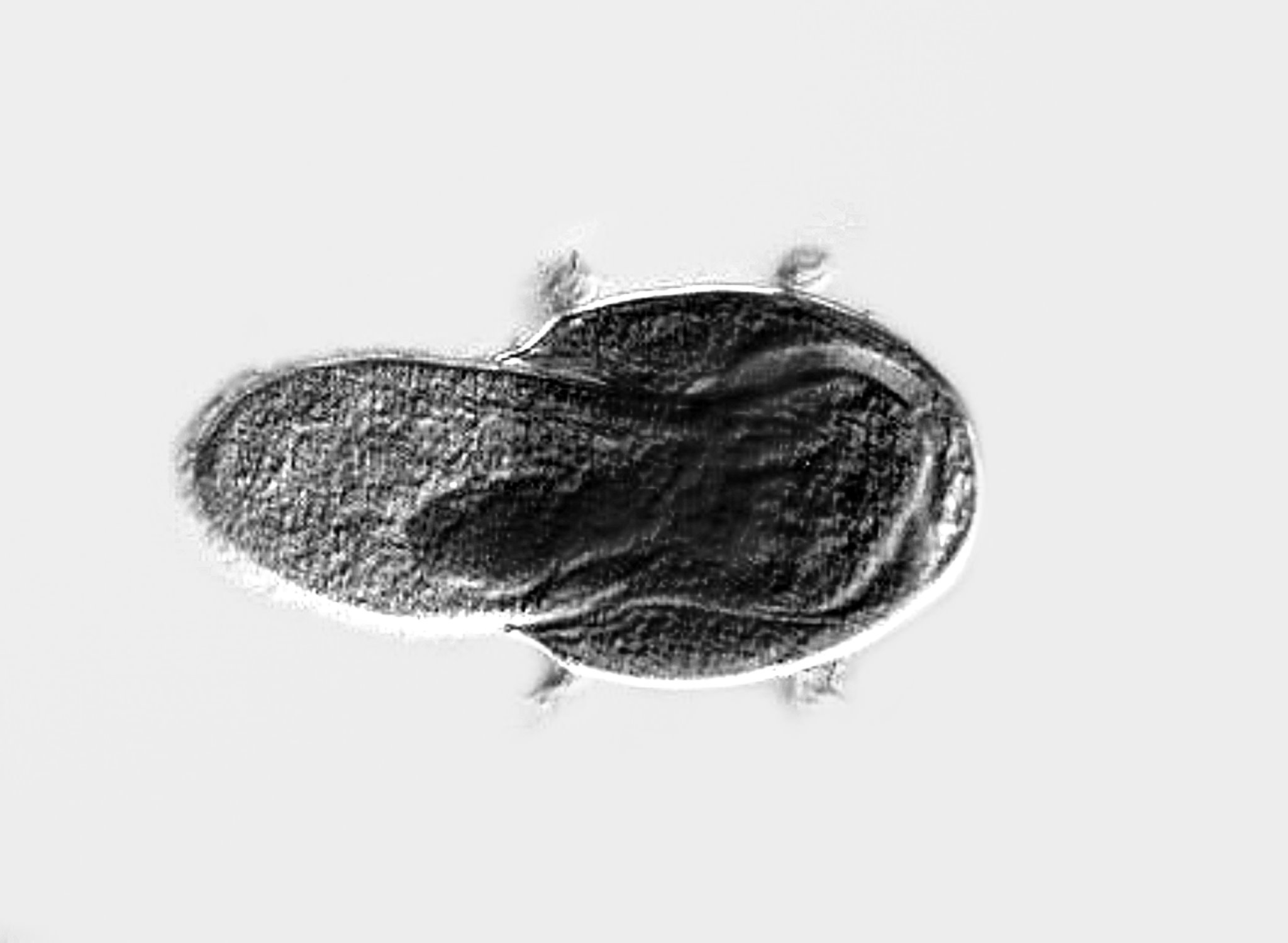
And here’s a drawing by Schewiakoff (1896) from Wikipedia, unfortunately, without a key. However, it does nicely demonstrate various morphological aspects which can be deduced with the help of other sources.
.jpg)
Clearly, this is an organism which can captivate and to which one can devote many pleasant hours.
Finally, let’s consider another fascinating protozoan, this one pigmented in a number of species of this genus, namely, Blepharisma. In ordinary circumstances, it has a light pink color. If deprived of light it becomes a deep red and when cannibalistically ingesting smaller, vulnerable companions, its vacuoles also become deep red. As it turns out the pigment granules have two basic functions, one is for orientation within a light column. This function allows the organism to position itself to find the best concentration of prey and to keep it from absorbing too much light as that triggers a toxic reaction which can prove fatal to the Blepharisma. The distinctive pigments, known as blepharismins (what else?) also have a defensive function and, at least with some potential prey organisms, will act as a deterrent. I’ll show you just a couple of images and then provide a link to an article which I did on Blepharisma and Climacostomum and you can check it out, if you want to know more about Blepharisma.
Here I will show you first a view of Blepharisma and nearby is a Colpidium which gives you an idea of the relative size. The second image is of a “cannibal giant” and you will notice that there is a vacuole which is deep red as a consequence of its containing a compatriot which the giant has ingested.
.jpg)
.jpg)
I hope you found this brief tour of a few of the “weapons” of protozoa of some interest and that it will encourage you to seek to discover further examples.
All comments to the author Richard Howey are welcomed.
Microscopy
UK Front Page
Micscape
Magazine
Article
Library
Please report any Web problems or offer general comments to the Micscape Editor.
Micscape is the on-line monthly magazine of the Microscopy UK website at Microscopy-UK